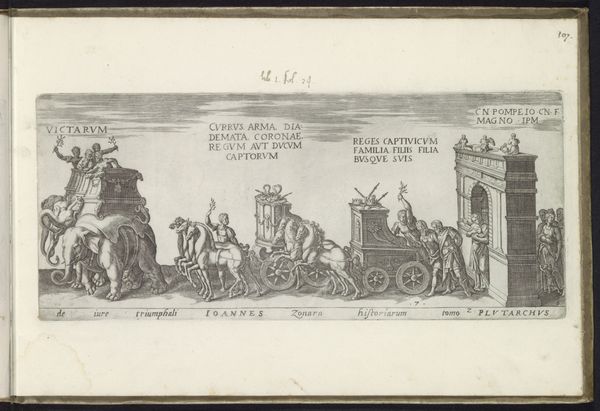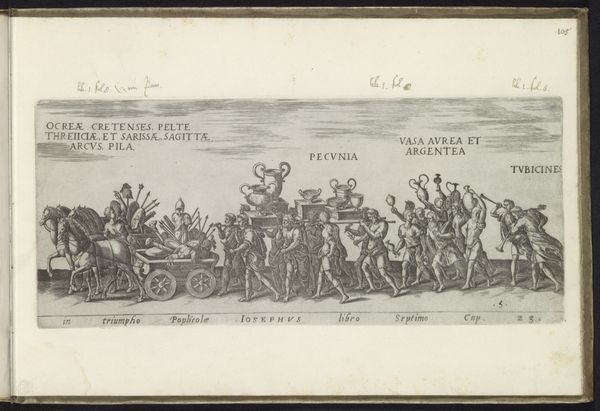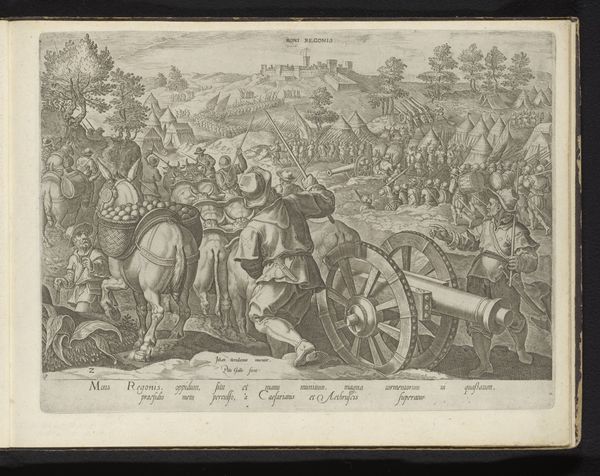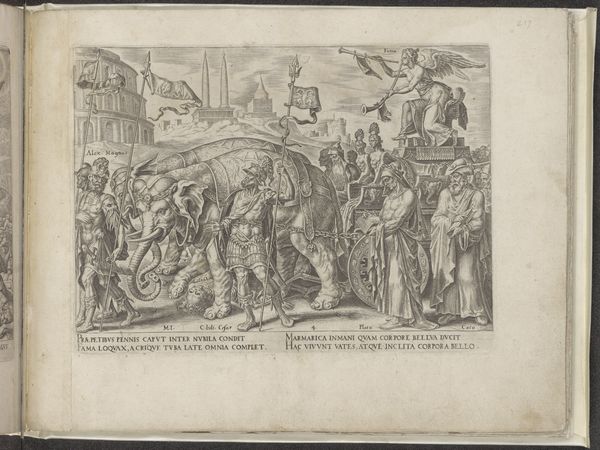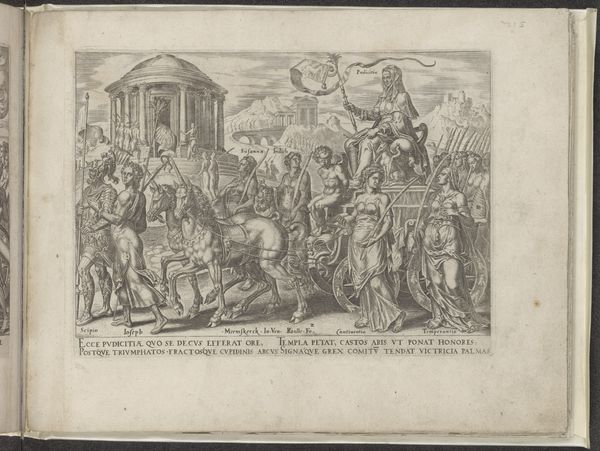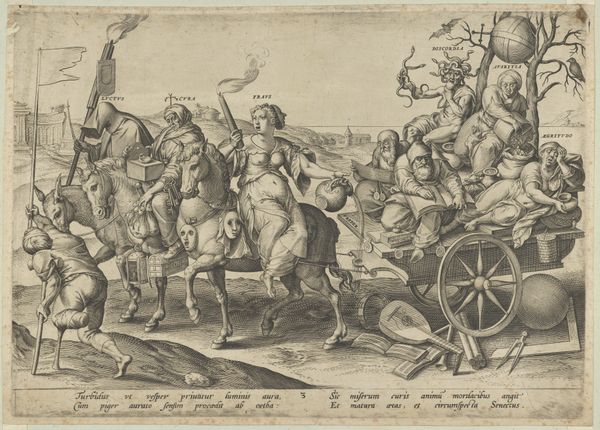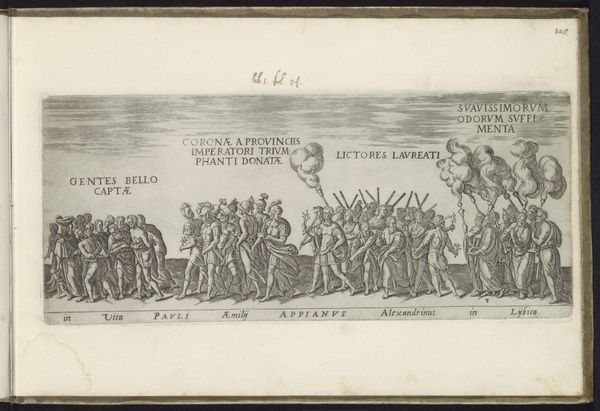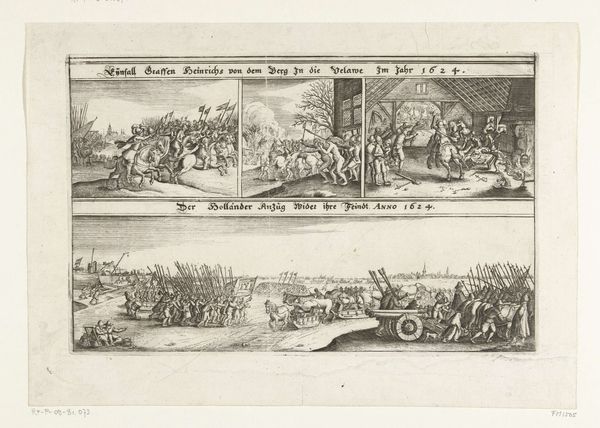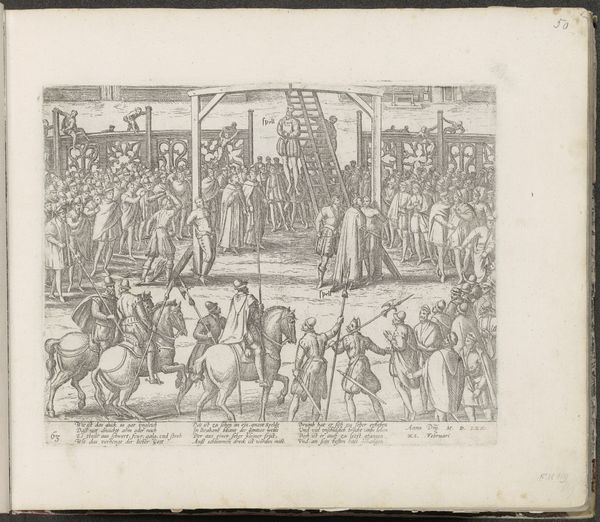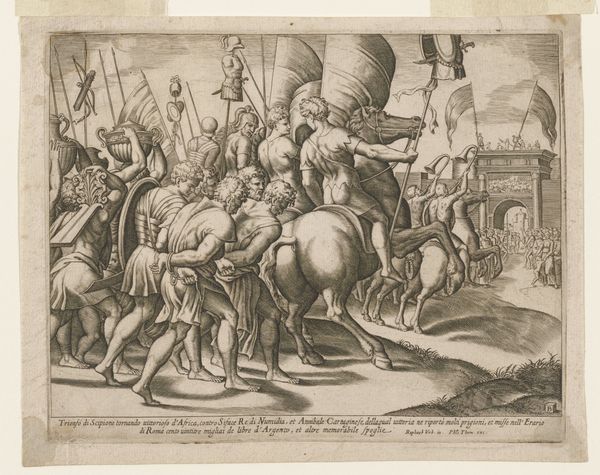
drawing, print, ink, engraving
#
portrait
#
drawing
#
pen drawing
# print
#
landscape
#
figuration
#
11_renaissance
#
ink
#
line
#
history-painting
#
engraving
Dimensions: height 155 mm, width 354 mm
Copyright: Rijks Museum: Open Domain
Curator: Look at the detail in this print by Onofrio Panvinio, titled "Triomf processie met wagens met oorlogsbuit," created in 1618. It's quite an intricate depiction of a triumphal procession, laden with spoils of war. What strikes you first about it? Editor: Well, the sheer accumulation of objects on those carts... it feels overwhelming. It’s meant to impress, of course, but it reads now as a blatant display of power, dominance justified by the systematic appropriation of resources. And all those bodies—animals and people—reduced to the work of transporting it all! Curator: That overwhelming sense certainly speaks to the intentions behind such displays. Triumphs were potent symbols, carefully constructed to cement a ruler's image. Notice the inscriptions alongside the image—a sort of explanatory text to ensure that no element of meaning is lost on the viewer. Editor: Absolutely, it’s propaganda. Even those figures carrying branches – gestures of peace, maybe? – seem performative against this backdrop of material excess. I can't help but think about the labor and exploitation underpinning that triumph; the violence necessary to procure those "spoils." What stories are intentionally left out? Curator: It’s a reminder that triumph is never a universal experience; someone else’s defeat always lies beneath the surface. Think of the golden and silver vessels described in the inscription. The materials, of course, possess their own symbolic weight—but there's a powerful allure, and those metals speak of power and endurance throughout time. Even the layout of the image itself reinforces a certain hierarchy, doesn't it? Editor: Indeed, this isn't simply an objective record of a historical moment. It's a highly constructed narrative designed to uphold power. And, seeing it rendered as a repeatable print makes it a particularly effective means to communicate across a vast landscape. Curator: Ultimately, this piece exemplifies how symbols are employed to create and reinforce meaning. Editor: And the study of images like these reminds us to critically examine whose stories are being told and at whose expense.
Comments
No comments
Be the first to comment and join the conversation on the ultimate creative platform.
